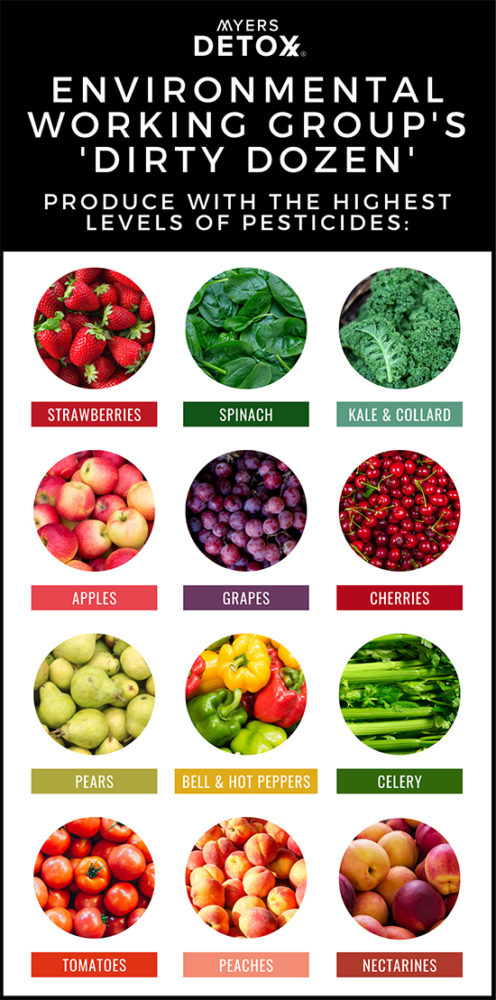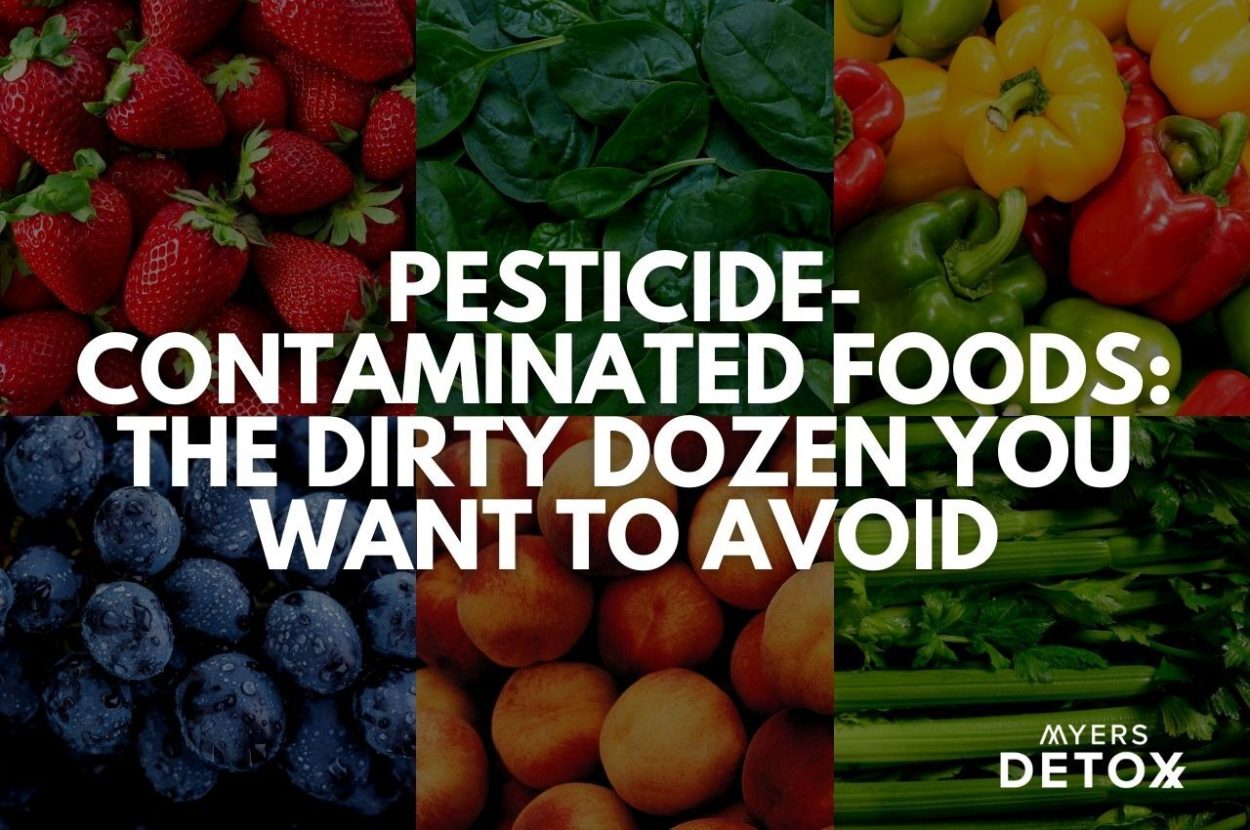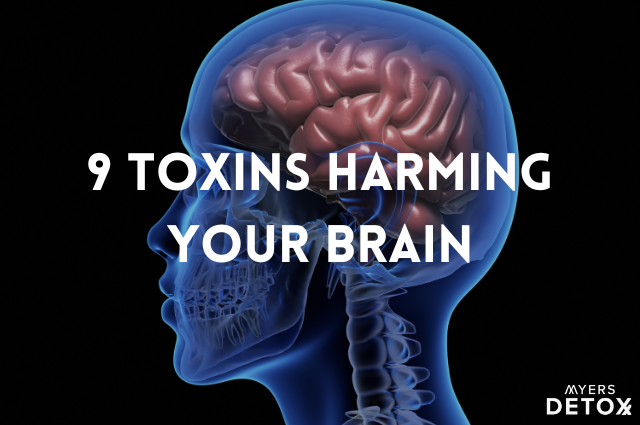You need to know which fruits and vegetables should ONLY be eaten if they are organic. Which ones are so heavily contaminated with pesticides they are a hazard to your health? Keep reading and find out.
While I always recommend only eating organic food, it can be easy to shop at the closest store and not seek out organic produce. It can take some creativity and time invested to find the little health food stores or shop online to find organic foods or find an organic farmers market delivery box.
I assure you after reading this article you’ll be pretty motivated to find new sources of organic food.
The vast majority of conventional crops in the United States are sprayed with pesticides to keep predators at bay and enhance crop yield. In fact, nearly 70% of all non-organic produce sold in the US contains pesticide residues.
While this may be wonderful for agriculture profit, the health detriments of pesticides for humans continue to be of significant concern.
In an effort to keep consumers informed, the Environmental Working Group (EWG) periodically puts out a “Dirty Dozen” list and a “Clean Fifteen” list to highlight which produce crops are of the greatest and lowest concern regarding pesticides.
In the latest iteration, the EWG highlights the top non-organic crops to avoid and brings attention to the harmful fungicides that can be found in citrus fruits.
In this article, you’ll learn:
- The detrimental health dangers of pesticides
- The key findings of the EWG report –including which pesticides escaped analysis
- Which foods are most heavily contaminated with these dangerous chemicals (the Dirty Dozen)
- The Clean Fifteen items that contain the lowest amount of pesticides
- The shocking health concerns caused by non-organic citrus fruit
The Health Dangers Of Pesticides
Pesticides present a wide range of potential concerns depending on the type of chemicals used and how you’re exposed to them. Some of the most well-researched dangers of pesticides include[1][2]:
- Endocrine disruption (disruption of hormonal systems, infertility)
- Nervous system dysfunction (impaired growth and development and brain function)
- Gastrointestinal disturbances (bloating, pain, nausea)
- Respiratory difficulties
- Carcinogenic effects
- Irritation of the skin
- Irritation of the eyes
With the overwhelming percentage of crops sprayed with pesticides in the US, it’s vital that you stay informed as a consumer about which crops to avoid and which are safe.
Below we’ll walk through the Environmental Working Groups key findings from their current analysis and highlight the 12 conventional crops that should be avoided as much as possible and the 15 safest options if you must eat them nonorganic.
Key Findings Of The EWG Report
The EWG reports not only on the number of pesticides in each crop but also on the varying types. Research shows that when a crop is sprayed with more than one type of pesticides, it can have an exponentially worse effect[4].
- More than 90 percent of samples of strawberries, apples, cherries, spinach, nectarines, and leafy greens tested positive for residues of two or more pesticides.
- A single sample of kale, collard, and mustard greens had up to 20 different pesticides, with the primary one being DCPA (or Dacthal). The Environmental Protection Agency(EPA) classifies DCPA as a potential human carcinogen, and this compound is currently banned by the European Union[3].
- Neurotoxic chemicals were also found on greens, such as neonicotinoids (the kind that kill bees) and pyrethroids.
- On average, spinach samples had 1.8 times as much pesticide residue by weight as any other crop tested.
- Hot peppers and bell peppers had the most pesticides detected, 115 pesticides in total, and 21 more pesticides than the crops with the second-highest amount – kale, collard, and mustard greens.
- The most concerning chemicals found on peppers were acephate and chlorpyrifos, two insecticides that are linked to issues with children’s brain development. These compounds are already banned for use in some US crops and are entirely restricted for use in the European Union[5].
- Perhaps most concerning of all is the complete omission of glyphosate from the USDA and FDA pesticide investigation. Glyphosate is the most heavily used pesticide in the US. During their analysis, the USDA did not even take glyphosate into consideration, leaving a large hole in the big picture of pesticide residues on US crops. This is frankly mindblowing and irresponsible and catering to corporate interests vs consumer safety.
The 2021 Dirty Dozen

Of the 46 fruits and vegetables assessed, the below twelve were found to be contaminated with the most pesticides of all the crops.
- Strawberries
- Spinach
- Kale, collard, and mustard greens
- Nectarines
- Apples
- Grapes
- Cherries
- Peaches
- Pears
- Bell and hot peppers
- Celery
- Tomatoes
The 2021 Clean Fifteen
On the opposite end of the spectrum from the “Dirty Dozen” sits the “Clean Fifteen.” The clean fifteen are those fruits and vegetables that contain the lowest detectable amount of pesticides as analyzed by the USDA.
Avocados and sweet corn came back with the lowest detectable pesticides, with fewer than 2% presenting with pesticide residues. In addition, multiple pesticide residues are extremely rare on Clean Fifteen vegetables, with only 8% of the Clean Fifteen having two or more pesticides.
All in all, almost 70% of Clean Fifteen fruit and vegetable samples had no pesticide residues at all.
- Avocados
- Sweet corn
- Pineapple
- Onions
- Papaya
- Sweet peas (frozen)
- Eggplant
- Asparagus
- Broccoli
- Cabbage
- Kiwi
- Cauliflower
- Mushrooms
- Honeydew melon
- Cantaloupes
It’s worth mentioning, once again, that not all pesticides are analyzed by the USDA. Glyphosate, in particular, is overlooked in these studies and still presents a great concern regarding human health. Therefore, choosing organic produce is always your best bet when possible.
Dangers Of Non-Organic Citrus
In this year’s report, along with their traditional lists of the “Dirty Dozen” and “Clean Fifteen”, the EWG made a point to highlight the dangers of non-organic citrus fruits due to alarming levels of a chemical called Imazalil.
Imazalil is a fungicide that was detected in nearly 90% of all citrus samples tested by the EWG and over 95% of tangerine samples tested by the USDA. The EPA has classified Imazalil as a likely human carcinogen, and this fungicide is known to disturb the endocrine system, changing hormone levels and potentially leading to disruptions in fertility and development[6].
Along with the staggering percentage of citrus fruit contaminated with Imazalil, it’s also worth mentioning that the fruit assessed by the EWG did not include the peel but focused solely on the edible portion of the fruit.
The Takeaway on Pesticide-Contaminated Foods
Many people turn away from organic produce due to the distinctively higher price tag than conventional options. Like most things in life, choosing your produce doesn’t have to be a black or white affair. As the EWG analysis shows us, certain conventional crops should be avoided as much as possible, while a handful of items may be passable in their non-organic varieties.
With all of that being said, it’s essential to remember that not all pesticides are tested for in the USDA analysis. Glyphosate, in particular, somehow escapes the government’s assessment and yet is still the most commonly used pesticide in the US.
Therefore, it’s always best to choose organic when possible, even if you’re looking for one of the Clean Fifteen.










